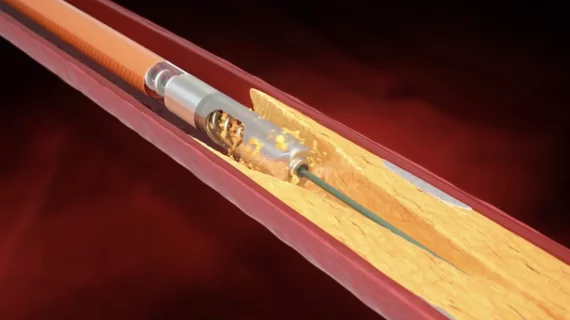FDA warns that atherectomy devices are breaking during use—30 serious injuries, 4 deaths reported
The U.S. Food and Drug Administration (FDA) has shared a new warning about ongoing safety issues with atherectomy devices sold and distributed by Bard Peripheral Vascular, an Arizona-based subsidiary of Becton, Dickinson and Company (BD).
The warning includes multiple models of Bard Peripheral Vascular’s Rotarex Atherectomy System, which is designed to target high-risk plaques and blood clots in the peripheral arteries by rotating at a high speed. According to the FDA, the rotating helix portion of the devices are fracturing or breaking when exposed to “certain stress, wear, high temperatures, friction or localized pressure.”
“Use of the device in certain anatomy and lesion types, as well as certain procedural factors, may cause the helix to fracture or break, requiring retrieval of a broken catheter and/or device fragment,” according to the advisory. “A helix fracture or break could cause vessel injury and may lead to severe bleeding or death.”
More than 100 incidents have been reported so far, including 30 serious injuries and four deaths.
Updated device instructions from the manufacturer
Bard Peripheral Vascular and BD have already released updated instructions for use (IFU) for these atherectomy devices, and additional training for clinicians is now available on BD’s website.
The new IFU document advises cardiologists to always use a “kink-resistant, suitably reinforced sheath” that is either the same size of the Rotarex Atherectomy System or even one size bigger. There is also a new warning not to use the device “across a vessel bifurcation or curve that results in a curvature of the catheter shaft of <4 cm in diameter.” Ipsilateral access should be considered instead in those cases.
Users are also warned to maintain adequate blood flow, to help reduce the risk of catheter overheating or blockage, and maintain constant catheter movement to limit stress on the device.
“Perform a smooth back and forth motion within the target lesion,” according to the new IFU. “Use a 10-mm forward motion (equivalent to one catheter head) for softer materials and 1 mm for denser lesions.”
Bard Peripheral Vascular is also warning users not to use these devices for the treatment of calcified vessel segments that “exhibit radiopacities on both sides of the arterial wall and extend beyond 10 mm in length prior to contrast injection or digital subtraction angiography.” Finally, the company emphasized that these catheters should be watched closely for any signs of resistance to movement. Reducing catheter advancement or flushing the catheter may be necessary.
FDA still evaluating this ‘potentially high-risk device issue’
The FDA has not yet classified this issue as a recall, but it did send out an “early alert” to inform clinicians and patients alike about the issue as quickly as possible.
“The FDA is currently reviewing information about this potentially high-risk device issue and will keep the public informed as significant new information becomes available,” according to the advisory.
This early alert is part of a new pilot program the FDA’s Center for Devices and Radiological Health announced in November 2024.

